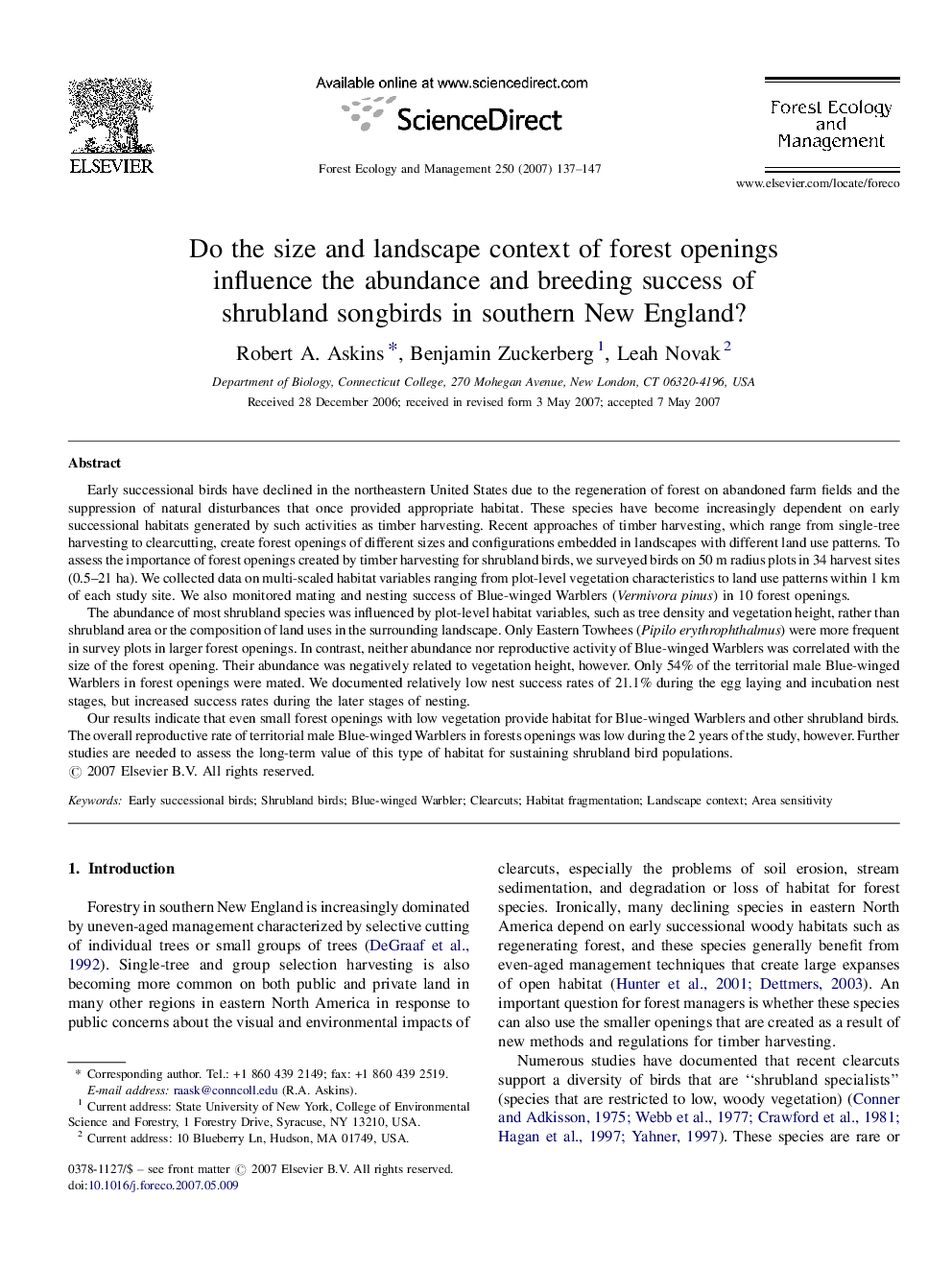| کد مقاله | کد نشریه | سال انتشار | مقاله انگلیسی | نسخه تمام متن |
|---|---|---|---|---|
| 90411 | 159379 | 2007 | 11 صفحه PDF | دانلود رایگان |

Early successional birds have declined in the northeastern United States due to the regeneration of forest on abandoned farm fields and the suppression of natural disturbances that once provided appropriate habitat. These species have become increasingly dependent on early successional habitats generated by such activities as timber harvesting. Recent approaches of timber harvesting, which range from single-tree harvesting to clearcutting, create forest openings of different sizes and configurations embedded in landscapes with different land use patterns. To assess the importance of forest openings created by timber harvesting for shrubland birds, we surveyed birds on 50 m radius plots in 34 harvest sites (0.5–21 ha). We collected data on multi-scaled habitat variables ranging from plot-level vegetation characteristics to land use patterns within 1 km of each study site. We also monitored mating and nesting success of Blue-winged Warblers (Vermivora pinus) in 10 forest openings.The abundance of most shrubland species was influenced by plot-level habitat variables, such as tree density and vegetation height, rather than shrubland area or the composition of land uses in the surrounding landscape. Only Eastern Towhees (Pipilo erythrophthalmus) were more frequent in survey plots in larger forest openings. In contrast, neither abundance nor reproductive activity of Blue-winged Warblers was correlated with the size of the forest opening. Their abundance was negatively related to vegetation height, however. Only 54% of the territorial male Blue-winged Warblers in forest openings were mated. We documented relatively low nest success rates of 21.1% during the egg laying and incubation nest stages, but increased success rates during the later stages of nesting.Our results indicate that even small forest openings with low vegetation provide habitat for Blue-winged Warblers and other shrubland birds. The overall reproductive rate of territorial male Blue-winged Warblers in forests openings was low during the 2 years of the study, however. Further studies are needed to assess the long-term value of this type of habitat for sustaining shrubland bird populations.
Journal: Forest Ecology and Management - Volume 250, Issue 3, 20 October 2007, Pages 137–147